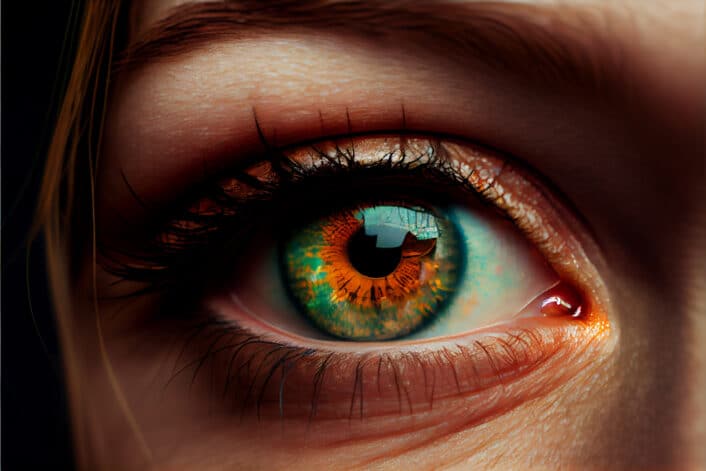

Disclaimer: This article is for informational purposes only and is not intended to diagnose any conditions. LifeDNA does not provide diagnostic services for any conditions mentioned in this or any other article.
Have you ever met someone who can’t tell red from green or struggles to distinguish certain shades? This condition is called color blindness, and for many people, it’s something they’re born with. Color blindness doesn’t mean seeing the world in black and white. Most people with color blindness can still see colors, just not in the usual way.
The most common type is red-green color blindness, where someone has trouble telling the difference between those two colors. Less common types include blue-yellow color blindness and total color blindness, which is very rare. These conditions affect how the light-sensitive cells in the eyes work. But what causes it and is it mostly genetic?
You may want to read: Genetics of Color Blindness
Color blindness happens when your eyes don’t detect colors properly. This is usually because some of your cone cells, special nerve cells, called photoreceptors, in your eyes are missing or don’t work well. Cone cells detect light and color. You normally have three types that respond to red, green, and blue light. When one or more types of cones don’t function as they should, your ability to see certain colors or shades becomes limited. Most people with color blindness can still see colors, just differently than others. Only very rare cases involve seeing only shades of gray.
You may want to read: Visual Acuity: Seeing Clearly Through Science and Genetics
Not all cases of color blindness are inherited. Some people develop it later in life due to aging, eye injuries, certain diseases like diabetes or glaucoma, or as a side effect of medications. These are acquired forms of color blindness.
One study looked into how type II diabetes can affect color vision. It included 343 participants and examined 673 eyes using a test called the Farnsworth-Munsell 100 Hue Test. The findings share that about 43% of people with type II diabetes showed some form of impaired color vision , and the rates were nearly the same whether or not the person had diabetic retinopathy. Most of the color vision problems involved difficulty telling apart blue and yellow shades.
However, when researchers used a special analysis technique called the moment of inertia, they didn’t find any consistent patterns, such as red-green or blue-yellow defects. This suggests that color confusion in diabetic individuals may be more random and severe rather than following typical color blindness types.
The study identified several other factors that were linked to a higher chance of having color vision problems. One of the most significant was clinically significant macular edema , which tripled the risk. People with higher intraocular pressure , even if still within the normal range, were also more likely to experience color vision loss. Another unexpected factor was elevated heart rate, which showed a weaker but still meaningful connection. While there were slightly higher rates of impaired color vision among women and those with certain types of cataracts (like posterior subcapsular cataracts), these weren’t strong enough to remain significant when other variables were considered. Together, these findings highlight that color vision issues in diabetes aren’t just tied to obvious eye disease, like diabetic retinopathy.
Color vision changes might not seem like a big problem at first, but they can have a serious impact on daily tasks. People with impaired color vision may struggle with recognizing traffic lights, reading charts that use color coding, or picking out ripe fruits. These issues can also affect job performance in professions where color recognition is important.
The study suggests that individuals with diabetes, especially those with macular swelling or higher eye pressure might benefit from functional vision testing and counseling. Even though these color vision problems might go unnoticed in a regular eye exam, they represent a real and often overlooked challenge in living with diabetes.
While there’s no cure for genetic color blindness, there are ways to manage it and adapt:


